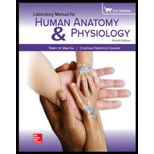
Concept explainers
Match the terms in column A with the descriptions in column B. Place the letter of your choice in the space provided.
Column A
a. Cervix
b. Cilia
c. Endometrium
d. Fimbriae
e. Fundus
f. Hymen
g. Lactiferous duct
h. Myometrium
i. Ovulation
j. Perineum
k. Suspensory ligament
l. Vagina
Column B
1. Rounded end of uterus near uterine tubes
2. Smooth muscle that contracts with force during childbirth
3. Thin membrane that partially closes vaginal orifice
4. Surface region around external genitalia
5. Process by which a secondary oocyte is released from the ovary
6. Portion of uterus extending into superior portion of vagina
7. Inner mucosal lining of uterus
8. Transports milk from milk-producing lobes to nipple
9. Help move secondary oocyte through the uterine tube toward uterus
10. Fingerlike projections of uterine tube near ovary
11. Birth canal during birth process
12. Holds ovary to pelvic wall
Want to see the full answer?
Check out a sample textbook solution
Chapter 60 Solutions
Laboratory Manual for Human Anatomy & Physiology (Cat Version)
- You are recquired to administer 150mg hydrocortisone intravenously,how many mls should you give?(stock =hydrocortisone 100mg in 2mls)arrow_forwardIf someone was working with a 50 MBq F-18 source, what would be the internal and external dose consequences?arrow_forwardWe will be starting a group project next week where you and your group will research and ultimately present on a current research article related to the biology of a pathogen that infects humans. The article could be about the pathogen itself, the disease process related to the pathogen, the immune response to the pathogen, vaccines or treatments that affect the pathogen, or other biology-related study about the pathogen. I recommend that you choose a pathogen that is currently interesting to researchers, so that you will be able to find plenty of articles about it. Avoid choosing a historical disease that no longer circulates. List 3 possible pathogens or diseases that you might want to do for your group project.arrow_forward
- not use ai pleasearrow_forwardDNK dagi nukleotidlar va undan sintezlangan oqsildagi peptid boglar farqi 901 taga teng bo'lib undagi A jami H boglardan 6,5 marta kam bo'lsa DNK dagi jami H bog‘lar sonini topingarrow_forwardOne of the ways for a cell to generate ATP is through the oxidative phosphorylation. In oxidative phosphorylation 3 ATP are produced from every one NADH molecule. In respiration, every glucose molecule produces 10 NADH molecules. If a cell is growing on 5 glucose molecules, how much ATP can be produced using oxidative phosphorylation/aerobic respiration?arrow_forward
- Answer in step by step with explanation. Don't use Ai and chatgpt.arrow_forwardIdentify the indicated cavity (Fucus). a. antheridia b. conceptacel c. receptacle d. oogonium e. none of thesearrow_forwardIdentify the indicated structure (Saprolegnia). a. antheridium O b. oospore c.sperm d. auxospore e. tetraspore Of. zygosporearrow_forward
 Medical Terminology for Health Professions, Spira...Health & NutritionISBN:9781305634350Author:Ann Ehrlich, Carol L. Schroeder, Laura Ehrlich, Katrina A. SchroederPublisher:Cengage Learning
Medical Terminology for Health Professions, Spira...Health & NutritionISBN:9781305634350Author:Ann Ehrlich, Carol L. Schroeder, Laura Ehrlich, Katrina A. SchroederPublisher:Cengage Learning Nutrition Through The Life CycleHealth & NutritionISBN:9781337919333Author:Brown, Judith E.Publisher:Cengage Learning,
Nutrition Through The Life CycleHealth & NutritionISBN:9781337919333Author:Brown, Judith E.Publisher:Cengage Learning,





